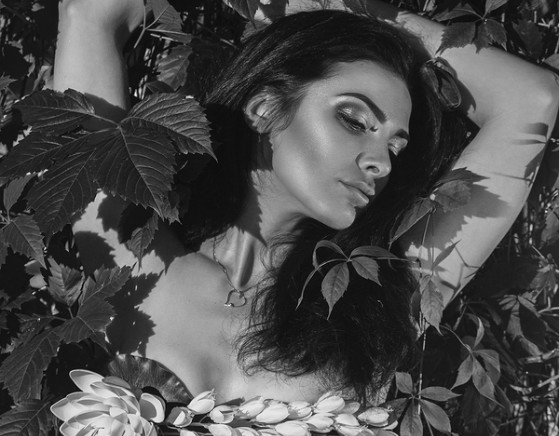Rise, Authentic Woman: A Manifesto for a New Female Mythology.

{source}
Mythology is the vital lifeblood of any culture.
It informs and shapes the way we understand our world and the people who live within it.
Myths aren’t falsehoods, they’re stories.
The stories we read, the stories we hear, the stories we tell others.
Myths aren’t about facts, they’re how we feel about facts.
Myths reflect our dreams, our fears, our hopes, our morals and our beliefs.
Myths show us ourselves.
When we think of myths, we tend to think of tales that were created a long time ago, in very different cultures to our own: Norse myths, ancient Greek myths, fairy tales and biblical narratives.
But these myths continue to be recreated and perpetuated every day in our advertising, our media and our children’s books.
The pure good girl who loves animals. The wicked stepmother who’s threatened by youthful beauty. The beautiful princess who’s just waiting for a handsome rich prince to sweep her off her small neat feet. The nag, the angel, the crone, the distracted mother. The devious temptress. The whore with the big heart. The female friends who only ever talk about their boyfriends.
The bossy smart girl who gets on everyone’s nerves. The shallow good-time bitch. The witch. The woman who just doesn’t know her place. And above all, the white, the heterosexual and the able-bodied.
Maybe these days, they’re a little sassier, it’s true. A few smart comebacks, and it looks like they’re standing on their own two feet. Thank you for that, Spice Girls.
But come the high hour, however many degrees they have in astrophysics, whatever the color of their karate belt, no matter how sensible their shoes, regardless of how many animal friends they have, your average mythological woman will still keel over at the slightest gust of baddie breath and will need rescuing from whatever it is that they need rescuing from — whether it be death, spinsterhood, poverty or malicious gossip…
… unless they’re a bona fide villain, of course, then they’ll keep lurching back to life like no one’s business, however many times you stab them.
This is our female mythology. Recycled, re-branded, retold. Unchanged.
But we live in interesting times; the old paradigms are shifting. Revolution is in the air. More and more writers, artists, filmmakers and thinkers are reclaiming the old female archetypes for themselves and transforming them into characters whose stories we recognize as more truthful and reflective of our own.
Instead of being uncomfortable tight molds that women struggle to squeeze into, these new female characters are far more open, diverse and complex. Authentic.
They can be playful and sincere at the same time. Tormented and compassionate. Masculine and feminine. Dirty and beautiful. Experimental and studious. Aggressive and kind. Heroine and anti-heroine. Trickster and savior.
The female capacity to be multi-dimensional is not evidence of our fickle insincere shallowness, as has often been painted.
The fact that we are changeable is not evidence of our untrustworthiness.
The fact that we have a richness of thoughts, feelings and behaviors is not evidence that we are unsteady and unreliable temptresses.
It is evidence of nothing more than the fact that we are human.
Humans with a wide variety of human relationships. We are not the same person with our children as we are with our partners; or our parents as we are with our friends; or our employees as we are with our neighbors; or our audiences as we are with ourselves. We are not the same people now as we were 10 years ago.
And yet simplicity and a very narrow set of behaviors and interests are what have come to define the mythology of the female. Women’s interests have become not only separate from male interests, but niche and specialized, as if, instead of half the human population, we form a very exclusive tiny minority interested in little else other than handbags, makeup and boys.
Well, stuff that.
Let’s not have role models here, only rich abundance, awkward messiness and multi-dimensional variety. Humans. With the odd goddess and demon.
Let’s ditch the female characters who know their place and do their best to stay in it.
Instead, let’s have female characters who haven’t yet worked out where they want their place to be.
Let’s have female characters who might think they know where their place is, but can’t for the life of them contain themselves in that place.
Let’s have females who are cursed for daring and choosing to step out of place.
The things that haven’t been said, the qualities that haven’t been shown, the behaviors that have been denied — these are the things we want to hear new stories about.
Because it’s time to reclaim ownership of our vast and rich female mythology.
Witches, demons, monstresses, goddesses, queens, blacksmiths, servants, rebels, superheroes, warriors, politicians, students, musicians, artists, philosophers, aerialistes, barmaids, firefighters, judges, scientists, engineers, writers, cowgirls, astronauts, builders, revolutionaries, doctors, journalists, secret agents, teachers, healers, librarians, pilots, waitresses, explorers, cleaners, film-makers, illustrators, taxi-drivers, mothers, sisters, daughters, grandmothers, aunts, friends, antagonists…
… and not one fucking princess in sight.
***
Kate Wickens is a novelist, blogger and screenwriter, who is fond of flea markets, Studio Ghibli and respectful inappropriateness. She is fascinated by anything that is not quite straightforward, like humans. Her new novel, Cursed Love Blues, about Atë, the disgraced goddess of delusion, infatuation and ruin, is out on May 10th from Amazon. You could celebrate the book release by joining Kate’s RAW online event on May 10th, and contact her via her website.
***
{Join us on Facebook, Twitter, Instagram & Pinterest}

